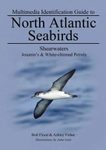By: Mark A Colwell(Editor), Susan M Haig(Editor)
330 pages, b/w photos, b/w illustrations, tables
![The Population Ecology and Conservation of Charadrius Plovers The Population Ecology and Conservation of Charadrius Plovers]()
Click to have a closer look
About this book
Contents
Customer reviews
Biography
Related titles
About this book
More than 30 species of plover (genus Charadrius) have provided key insights shaping theory across a wide range of ecological sub-discipline. Many of these species are also threatened because they live where human population is greatest. The editors have organized a group of international specialists to write a series of multi-authored chapters. The Ecology and Conservation of Plovers Charadrius has a strong applied emphasis. The book will be of great use to conservationists worldwide. The book is organized into sections corresponding to the annual cycle of each taxon. As such, it will use the Full Life Cycle Biology approach championed by researchers spearheading conservation of migratory species worldwide.
Contents
1. An overview of the world’s plovers
Mark A. Colwell and Susan M. Haig
2. Defining species and populations: molecular genetic studies in plovers
Clemens Kupper and Natalie dos Remedios
3. Changing climates and challenges to Charadrius plover success throughout the annual cycle
Susan M. Haig
4. Plover breeding systems: diversity and evolutionary origins
Luke J. Eberhart-Phillips
5. Breeding biology of Charadrius plovers
Lynne E. Stenzel and Gary W. Page
6. Predation and predator management
Mark A. Colwell
7. Evolutionary and ecological flexibility in migration of Charadrius plovers
Jesse R. Conklin
8. Nonbreeding ecology
Erica Nol
9. Habitat ecology and conservation of Charadrius plovers
James D. Fraser and Daniel H. Catlin
10. Population biology
Stephen J. Dinsmore
11. Human disturbance
Michael A. Weston
12. Future challenges for Charadrius plovers
Susan M. Haig and Mark A. Colwell
Customer Reviews
Biography
Mark Colwell has been a professor in the Wildlife Department at Humboldt State University (Arcata, CA) for over 25 years. His research on shorebirds for the past 35 years has resulted in over 75 peer-reviewed papers, mostly covering the behaviour, ecology and conservation of shorebirds, including the Snowy Plover. He teaches an advanced undergraduate course in Shorebird Ecology, Conservation, and Management, which was the foundation for the text-reference book published in 2010. He has been recognized by HSU as Scholar of the Year (2007) and Outstanding Professor (2013).
Susan Haig is a Senior Scientist (emerita) at the U.S. Geological Survey Forest and Rangeland Ecosystem Science Center, Professor of Wildlife Ecology at Oregon State University and a Research Associate of the Smithsonian Institution. Her work on small population biology and conservation genetics focused on shorebirds and Piping Plovers in particular. For many years, she served as the Leader of the U.S. Fish and Wildlife Service Piping Plover recovery team in the Great Lakes and Northern Great Plains. She also served as President of the American Ornithologists' Union. She has been awarded the Miller Medal by the Cooper Ornithological Society and a Distinguished Service Award from the U.S. Department of the Interior.
By: Mark A Colwell(Editor), Susan M Haig(Editor)
330 pages, b/w photos, b/w illustrations, tables
"I strongly recommend this wonderful compilation to ornithologists, students, and laypeople. Many will enjoy reading the book chapters that are packed with good data and ideas for follow-up studies. The text is clear and illustrative, much jargon has been carefully avoided, and the illustrations are excellent. Therefore, the conservation methods, actions, and implications presented in this book will provide immensely useful material for conservation biology courses. By providing a link between science and conservation action, practical conservationists will also benefit from reading it."
– Jay Mager, Associate Professor of Biological and Allied Health Sciences, Ohio Northern University (U.S.)














































